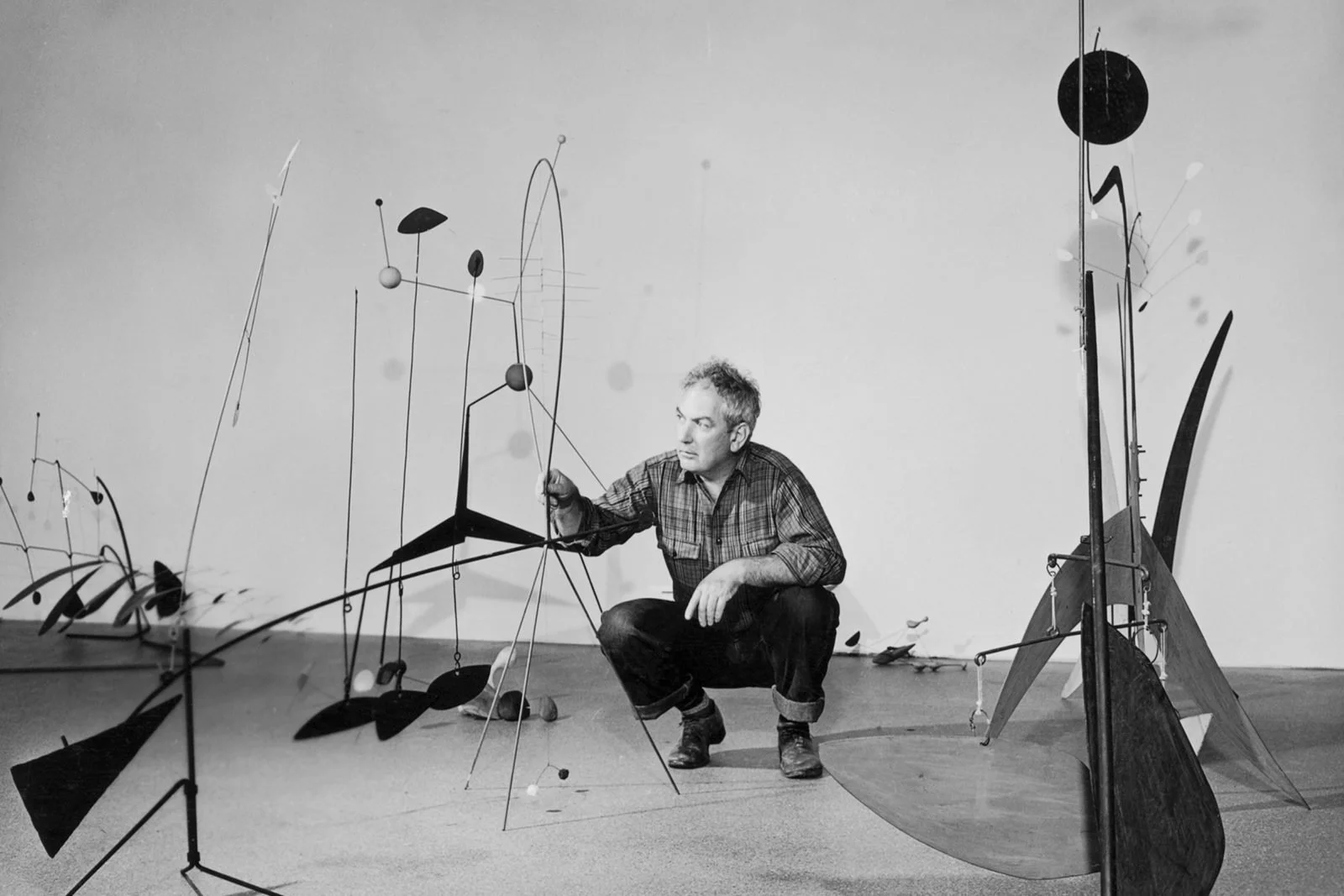Waving Kindly: Playful Balance in “Petit semaphore rouge et bleu” (1971) by Alexander Calder
Written by Nínive Vargas de la Peña for Sotheby’s Contemporary Curated. March 2022.
The twentieth century is characterized by artists' fascination with capturing motion in every medium and format, and Alexander Calder stands out prominently by brilliantly giving static sculptures a palpable autonomy. His mobiles and stabiles are premeditated designs that intersect with chance; they gracefully dance for the viewer in unique, accidental patterns. While Calder pre-determined the possible range of motion, his mobiles retain an independence created by the environment's arbitrary wind conditions. Petit Semaphore Rouge Et Bleu exudes the illusion of agency, as if its movement were arising from within the sculpture. Artist, mechanical engineer, inventor, and pioneer of the international avant-garde, Alexander Calder forever changed the understanding of sculpture by pushing it into the realm of motion.
“Better a good sculpture than a good motor”
ALEXANDER CALDER
Silent
Dance of Color
Alexander Calder Petit semaphore rouge et bleu (1971). Private Collection.The present work is beautiful in its simple minimalism with blue and red discs poised atop a bold yellow base. Constructed of solely geometric and biomorphic forms, the work is unfettered by any direct notion of representation. Instead, Petit Sémaphore Rouge et Bleu interacts with its environment, participating actively in the universe in a riveting expression of Calder’s creative genius. This marvelous standing mobile is an immaculate encapsulation of Calder’s expertise as an innovative and wondrous artist.
"Maybe you should take all these red, yellow and blue elements off the canvas and let them hang in the air, so they can move," [Calder said]. Mondrian reacted, "Well, I think my paintings are fast enough already…"
— ALEXANDER CALDER AND PIET MONDRIAN IN CONVERSATION IN 1930, DURING A VISIT BY CALDER TO MONDRIAN'S PARIS STUDIO. AS QUOTED BY ALASTAIR SOOKE, IN 'MONDRIAN - THE JOY OF BEING SQUARE,' BBC CULTURE, STATE OF THE ART, 10 JULY 2017, ONLINE
Poetry in motion.
After moving to Paris, Calder was inspired to use wire as a medium to “draw on air.” Through his constant manipulation of material, he quickly discovered its inherent kinetic capabilities as shown in his renowned Cirque Calder. Soon after, Calder visited the Piet Mondrian’s studio in the city and was exposed to the vibrant world of geometric abstraction and primary colors. These discoveries prompted his interest in mobile abstraction.
Reducing his palette to red, yellow and blue, these perfectly balanced mobiles try to create an aesthetic revolution by utilizing the most basic elements of construction. Primary colors, monochromatic pigments, thin sheets of metal, and perfectly manipulated wire combine in Petit Sémaphore Rouge et Bleu. Intended to be approached with ludic intention, Calder's objective was playful encounters between viewers and art, delimiting our expectations into two pathways: red and blue. Mimicking an actual semaphore—be it the apparatus that creates a visual signal transmitted over a distance, or the act of holding out the arms or flags in the air—this stabile exists as an amusing character that interacts within our space. Petit Sémaphore Rouge et Bleu is an exceptional embodiment of the motion and imagination central to Calder's oeuvre.



